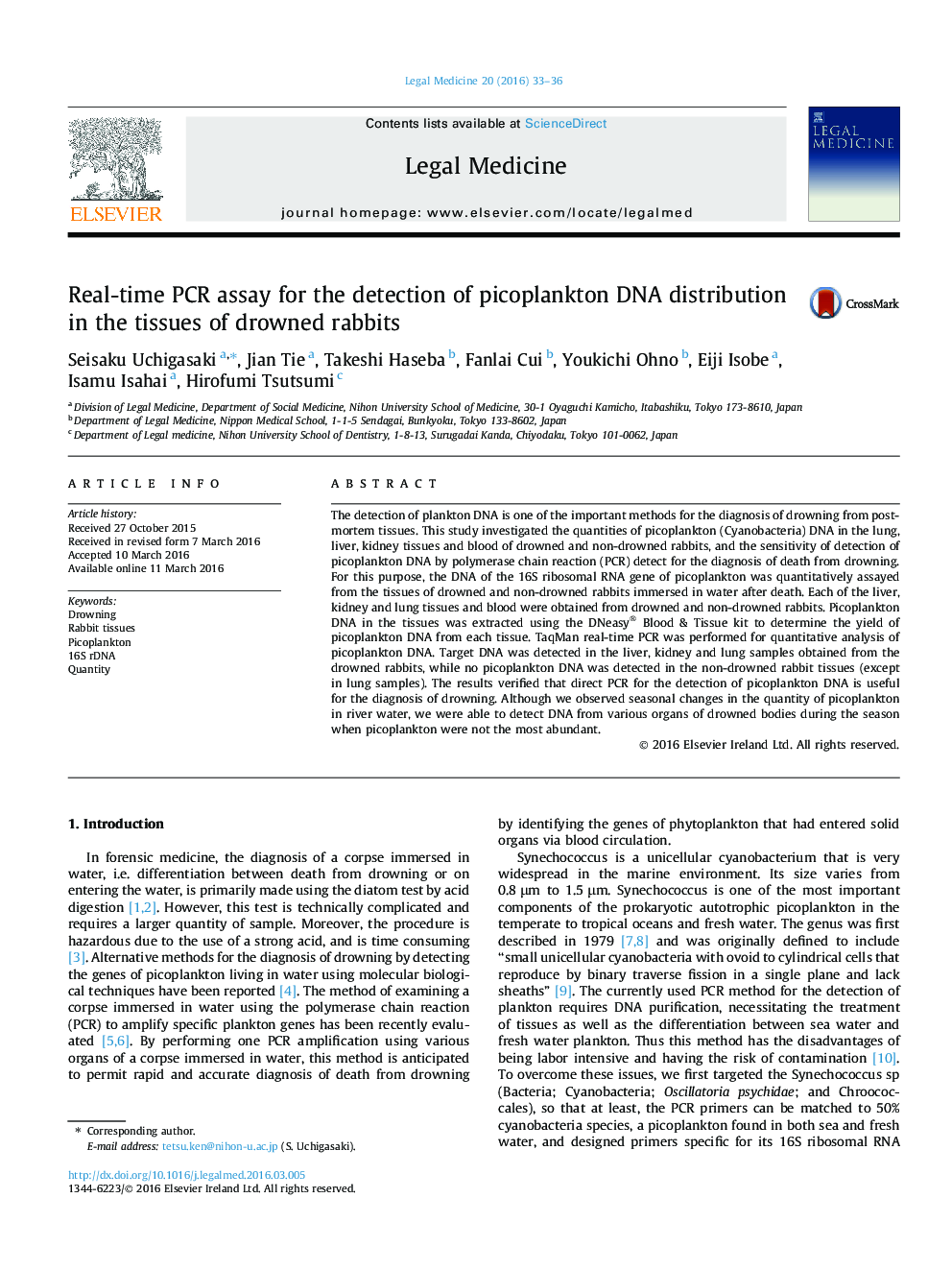| Article ID | Journal | Published Year | Pages | File Type |
|---|---|---|---|---|
| 103410 | Legal Medicine | 2016 | 4 Pages |
Highlight•DNA picoplankton quantities were investigated in the drowned and non-drowned rabbit’s tissues.•TaqMan real-time PCR was performed for quantitative analysis.•Target DNA was detected in drowned rabbits.•No picoplankton DNA was detected in non-drowned rabbit tissues.•Direct PCR detects picoplankton DNA and is useful for the diagnosis of death by drowning.
The detection of plankton DNA is one of the important methods for the diagnosis of drowning from postmortem tissues. This study investigated the quantities of picoplankton (Cyanobacteria) DNA in the lung, liver, kidney tissues and blood of drowned and non-drowned rabbits, and the sensitivity of detection of picoplankton DNA by polymerase chain reaction (PCR) detect for the diagnosis of death from drowning. For this purpose, the DNA of the 16S ribosomal RNA gene of picoplankton was quantitatively assayed from the tissues of drowned and non-drowned rabbits immersed in water after death. Each of the liver, kidney and lung tissues and blood were obtained from drowned and non-drowned rabbits. Picoplankton DNA in the tissues was extracted using the DNeasy® Blood & Tissue kit to determine the yield of picoplankton DNA from each tissue. TaqMan real-time PCR was performed for quantitative analysis of picoplankton DNA. Target DNA was detected in the liver, kidney and lung samples obtained from the drowned rabbits, while no picoplankton DNA was detected in the non-drowned rabbit tissues (except in lung samples). The results verified that direct PCR for the detection of picoplankton DNA is useful for the diagnosis of drowning. Although we observed seasonal changes in the quantity of picoplankton in river water, we were able to detect DNA from various organs of drowned bodies during the season when picoplankton were not the most abundant.
